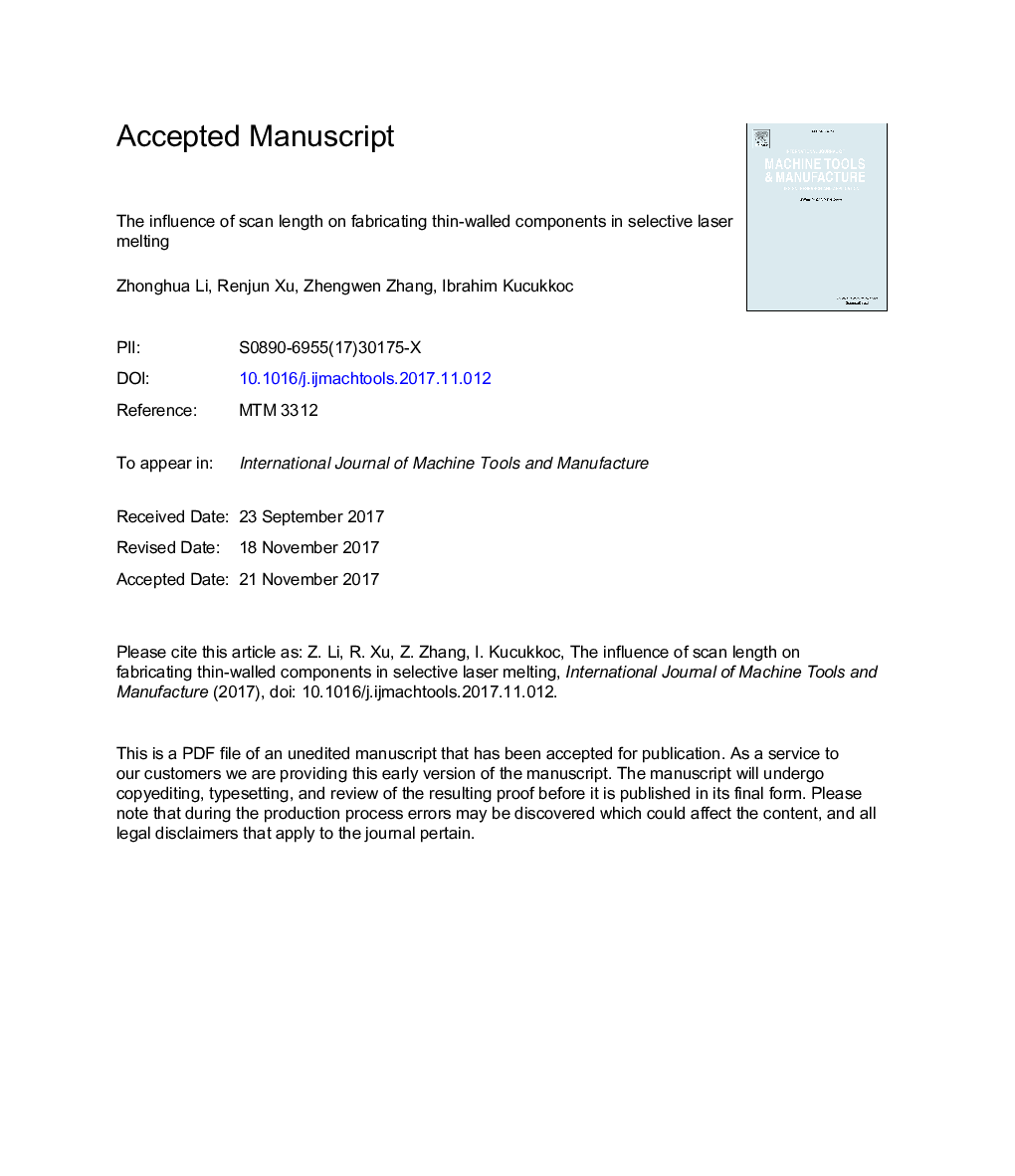| Article ID | Journal | Published Year | Pages | File Type |
|---|---|---|---|---|
| 7173365 | International Journal of Machine Tools and Manufacture | 2018 | 26 Pages |
Abstract
As one of the advanced additive manufacturing (AM) processes, the selective laser melting (SLM) process provides the possibility of manufacturing almost any complex parts in a wide range of metal materials. In the SLM process, undesired distortion and shrinkage are much more likely to occur in forming Ti6Al4V thin-walled parts due to high-temperature gradients and thermal stresses. In this study, a three-dimensional (3D) finite element model based on indirect coupled thermal-structural analysis is applied to study the variations of temperature, stress and strain fields with different scan lengths. At the same time, the corresponding validation experiments were conducted. It was found that the scan length chiefly affects the second peak temperature rather than the highest temperature. The strain is majorly decided by stress generated during the SLM process. The deviations of thin-walled parts are approximately proportional to the scan lengths. The most suitable scan length is between 4Â mm and 6Â mm for thin-walled components with specified process parameters, in which case the shrinkage per unit is close to zero.
Related Topics
Physical Sciences and Engineering
Engineering
Industrial and Manufacturing Engineering
Authors
Zhonghua Li, Renjun Xu, Zhengwen Zhang, Ibrahim Kucukkoc,
